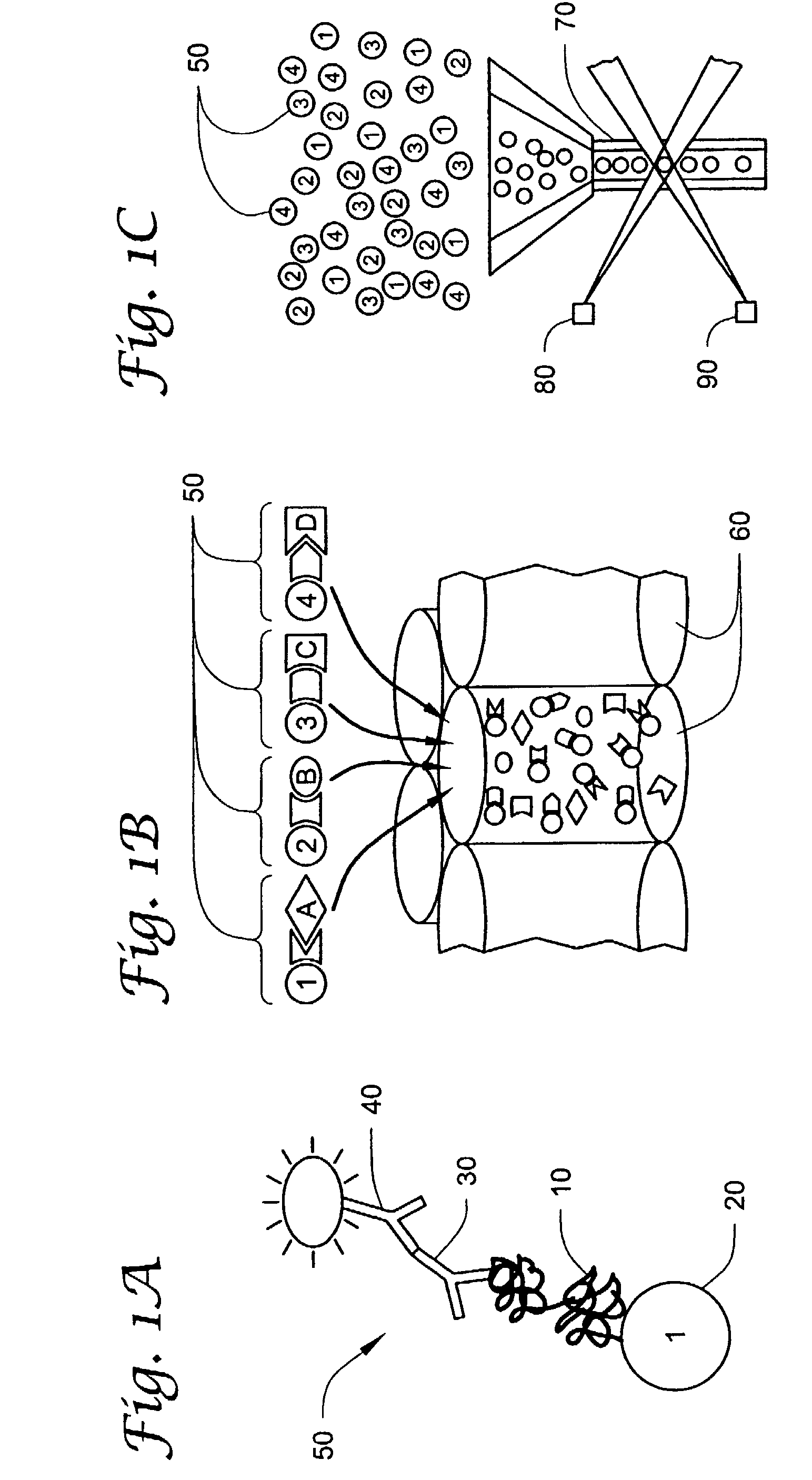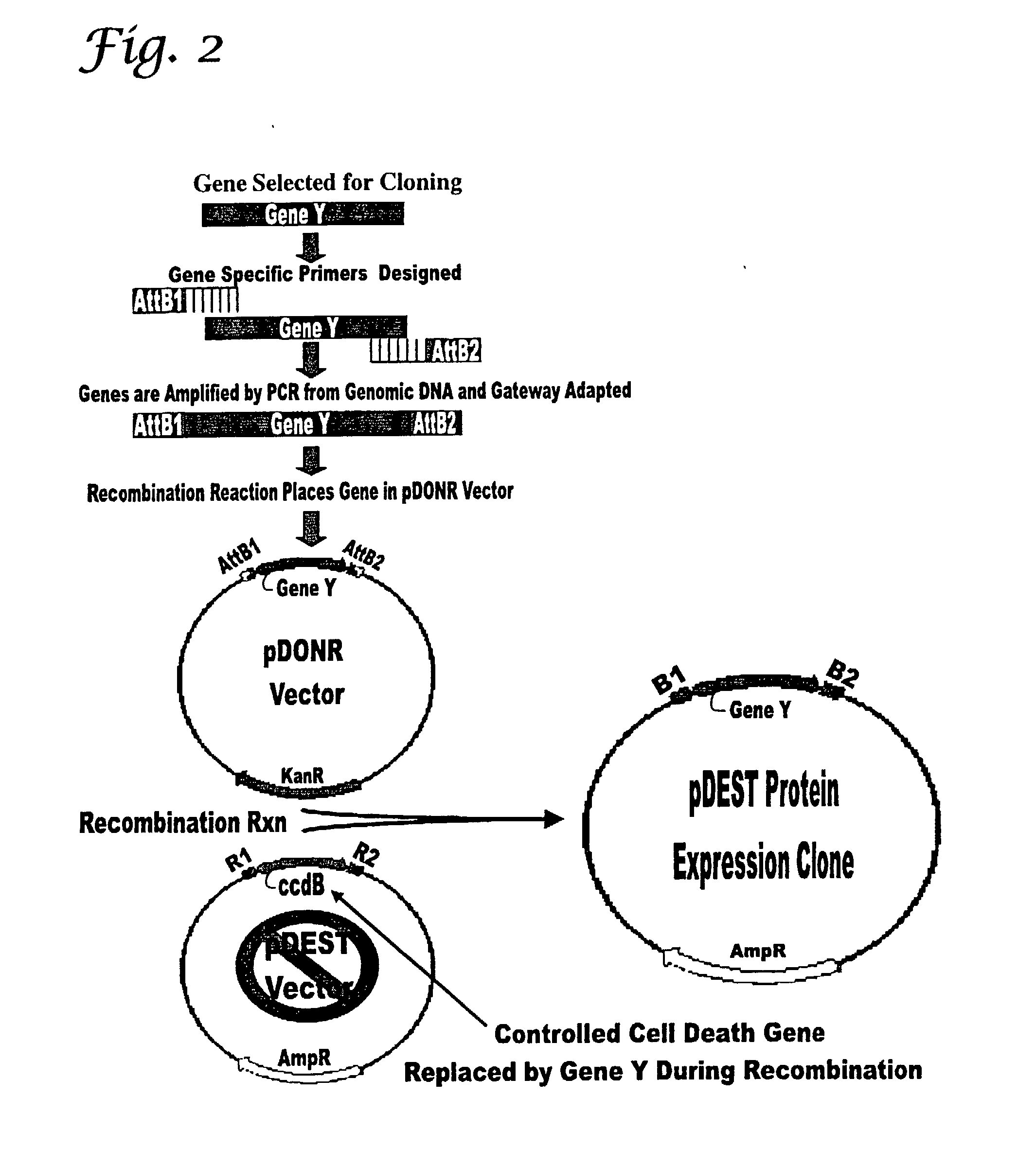Diagnostic Assay For Trypanosoma Cruzi Infection
a technology of trypanosoma cruzi and assay, applied in the field of diagnostic assay for trypanosoma cruzi infection, can solve the problems of chagas disease becoming a serious health issue, showing a degree of variability, etc., and achieves the effects of enhancing the antigenic potency of individual epitopes, enhancing immune responses, and facilitating construction and production
- Summary
- Abstract
- Description
- Claims
- Application Information
AI Technical Summary
Benefits of technology
Problems solved by technology
Method used
Image
Examples
example 1
Buffer and Medium Preparation
[0096] A variety of buffers were used in the Bio-Plex multiplex analysis. The buffers were prepared as follows. To prepare 1 liter of PBS / BSA (10 mM NaH2PO4, 150 mM NaCl, and 0.1% (w / v) BSA), 8.77 g NaCl (MW 58.44 g / mol) and 1.4 g NaH2PO4—H2O (MW 137.99 g / mol) were dissolved in 900 ml H2O and the pH was adjusted to 7.4 using NaOH. Then, dissolve 1 gram of BSA and adjust the volume to 1 liter. Before use, filter the buffer using a 0.45 μM filter. Sodium Azide should be added to 0.5% when storing the PBS / BSA buffer for long term. Azide should not be used with Carboxy Beads.
[0097] To prepare 1 liter of coupling buffer (50 mM MES), 11.67 g MES (MW 233.2 g / mol) was dissolved in 900 ml H2O and the pH was adjusted to 5.0 using NaOH. The volume was then adjusted to 1 liter using additional H2O. Before use, the buffer should be filtered using a 0.45 μM filter.
[0098] To prepare 1 liter of activation buffer (100 mM NaH2PO4), 13.80 g NaH2PO4—H2O (MW 137.99 g / mol)...
example 2
Production of Protein Pools or Individual Proteins
[0101] To provide a large set of T. cruzi proteins, over 350 proteins in pools of approximately 10 proteins each were prepared. The proteins were prepared using the Gateway® universal cloning technique developed by Invitrogen™. The procedure can be carried out by cloning a pool of several genes together, which results in a pool of proteins, or by cloning an individual gene, resulting in the preparation of an individual protein. For preparation of an individual protein, a gene that codes for a desired T. cruzi protein is first selected for cloning. This gene is amplified from T. cruzi genomic DNA using gene specific primers flanked by lambda phage recombination sites, attB1 (5′) and attB2 (3′) and polymerase chain reaction. Gel purification of the att-flanked PCR produced was carried out by separating the PCR reaction product on a 1% agarose gel using electrophoresis. The particular gene is identified by comparison with a DNA standar...
example 3
Preparation of Bio-Plex Beads
[0107] LiquiChip™ Ni-NTA beads (Qiagen Inc., Valencia, Calif.) were used to bind His-tagged purified proteins in the Bio-Plex assay, but had to be prepared before use. First, the protein samples were desalted into Buffer Z that does not contain Imidazole using Amersham PD-10 desalting columns (Amersham Biosciences Corp, Piscataway, N.J.). The protein was then quantified using a BCA assay and diluted to a concentration of 10 μg / ml with Buffer Z. The LiquiChip™ Ni-NTA Bead stock was then vortexed for 30 seconds at full speed. Next, 50 μl of bead suspension was pipetted out and placed into a 1.5 ml microcentrifuge tube. His-tagged protein dilution (50 μl) was then added to the 50 μl LiquiChip™ Bead suspension. The beads were then incubated at 4° C. in the dark from at least 4 hours to overnight. Buffer (900 μl PBS / BSA (10 mM NaH2PO4, 150 mM NaCl, 0.1% BSA pH 7.4)) was then added to the protein-coupled LiquiChip™ Bead suspension, adding 0.5% azide as a pres...
PUM
| Property | Measurement | Unit |
|---|---|---|
| Fraction | aaaaa | aaaaa |
| Immunogenicity | aaaaa | aaaaa |
| Antigenicity | aaaaa | aaaaa |
Abstract
Description
Claims
Application Information
 Login to View More
Login to View More - R&D
- Intellectual Property
- Life Sciences
- Materials
- Tech Scout
- Unparalleled Data Quality
- Higher Quality Content
- 60% Fewer Hallucinations
Browse by: Latest US Patents, China's latest patents, Technical Efficacy Thesaurus, Application Domain, Technology Topic, Popular Technical Reports.
© 2025 PatSnap. All rights reserved.Legal|Privacy policy|Modern Slavery Act Transparency Statement|Sitemap|About US| Contact US: help@patsnap.com



